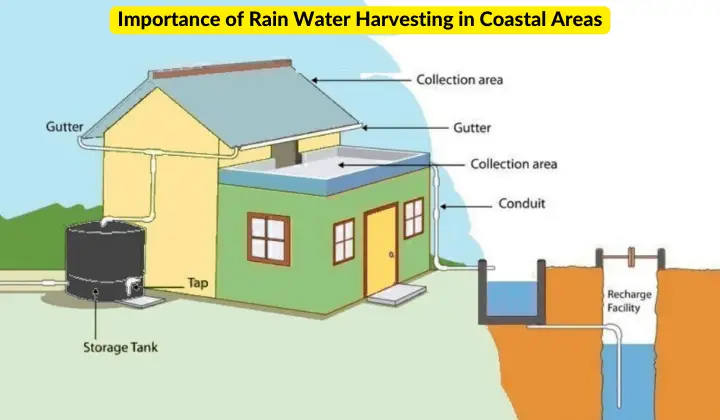Importance of Rain Water Harvesting in Coastal Areas
The life and development of the global community are dependent on water resources. Ground water is considered as one of the primary resources for developmental activities. Ground water quality and ground water tables are continuously declining as a result of industrial, agricultural, and urban pollutants, raising the danger of quality deterioration and contaminating potable ground water aquifers.
The increasing pressure from economic activities and over extraction of groundwater has caused sea water intrusion into the water table in coastal areas. This increase in salinity has brought in issues like paucity of drinking water, reduction in areas under cultivation, reduced yield per hectare, and health hazards for people and cattle.
India has a very long coastline and the coastal zone is the most industrialized and urbanized area in the country. Most of coastal areas in the world are dependent on local fresh ground water resources. Coastal aquifers are most productive aquifers but due to various activities intrusion of saltwater is the most common pollutant in coastal aquifers. Most of the Oil refineries and industries are situated in coastal area and often cause soil and groundwater pollution, due to potential leakages of petroleum products. The depletion in the ground water will continue further and increasing area would fall under the ground water deficit zone and often cause soil and groundwater pollution.
Rainwater harvesting is an excellent source for supplementary water resource. Rainwater harvesting is an ancient method of collecting water that is important to the local and regional hydrological cycle. It is mostly used in dry settings and has been recognized as a viable decentralized water supply by several countries.
Rainwater Harvesting is the method of collecting and storing rainwater on the surface or in subsurface aquifers before it is lost as surface runoff. The augmented resource can be taken whenever it is required. There are various benefits of rain water harvesting such as it rises ground water tables, mitigate the effect of drought, reduce flood hazards and soil erosion, cost effective, reduce pollution. Rainwater collected on building roofs, in paved and unpaved areas, is wasted in urban and coastal environments. Rooftop water can be re-charged into an aquifer and later utilized usefully.
Water harvesting systems must be constructed in such a way that they do not take up a lot of space for collection and recharging .The rainwater harvesting improves the quality and the quantity of ground water.Aquifers can be naturally or artificially recharged. If an aquifer recharges naturally, rainwater or surface water will naturally percolate into shallow and deep aquifers. Rainwater harvesting artificially increases recharge by a well-designed and constructed structure that transfers runoff water from the earth’s surface to a water-bearing formation (aquifer) available at any depth.
Apart from individual rainwater harvesting systems, alternative ways for harvesting rainfall in densely populated cities and coastal regions include direct infiltration, collecting rainwater in ponds or reservoirs, and recharging groundwater aquifers through bore holes. Rainwater harvesting structure design is site specific, involving hydro metrology, lithology, and land use. Rain water harvesting has been neglected due to the improvements in the technological fields, paved and built urban areas in many developed countries, which resulted in reduction of groundwater recharge area. Rainwater harvesting is an environmentally sustainable way to deal with the worldwide water crisis, and it could help with water management strategies.

2 thoughts on “Importance of Rain Water Harvesting in Coastal Areas”
Comments are closed.